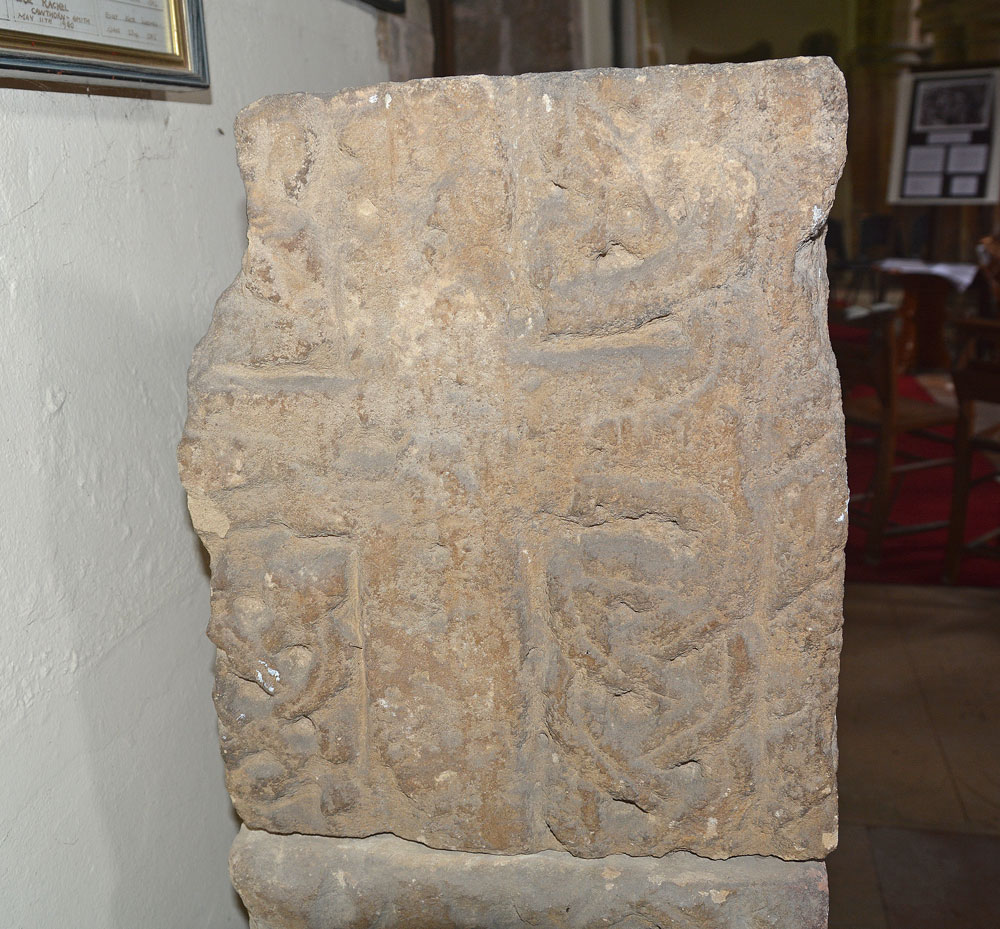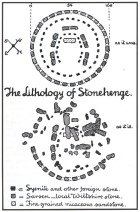<< Our Photo Pages >> Holy Trinity (Rolleston) - Ancient Cross in England in Nottinghamshire
Submitted by Anne T on Tuesday, 21 May 2019 Page Views: 4756
Early Medieval (Dark Age)Site Name: Holy Trinity (Rolleston)Country: England
NOTE: This site is 2.825 km away from the location you searched for.
County: Nottinghamshire Type: Ancient Cross
Nearest Town: Newark Nearest Village: Rolleston
Map Ref: SK7418552503
Latitude: 53.064630N Longitude: 0.894394W
Condition:
| 5 | Perfect |
| 4 | Almost Perfect |
| 3 | Reasonable but with some damage |
| 2 | Ruined but still recognisable as an ancient site |
| 1 | Pretty much destroyed, possibly visible as crop marks |
| 0 | No data. |
| -1 | Completely destroyed |
| 5 | Superb |
| 4 | Good |
| 3 | Ordinary |
| 2 | Not Good |
| 1 | Awful |
| 0 | No data. |
| 5 | Can be driven to, probably with disabled access |
| 4 | Short walk on a footpath |
| 3 | Requiring a bit more of a walk |
| 2 | A long walk |
| 1 | In the middle of nowhere, a nightmare to find |
| 0 | No data. |
| 5 | co-ordinates taken by GPS or official recorded co-ordinates |
| 4 | co-ordinates scaled from a detailed map |
| 3 | co-ordinates scaled from a bad map |
| 2 | co-ordinates of the nearest village |
| 1 | co-ordinates of the nearest town |
| 0 | no data |
Internal Links:
External Links:
I have visited· I would like to visit
Anne T visited on 10th May 2019 - their rating: Cond: 3 Amb: 4 Access: 4 Cross Shaft Fragments and Cross Slabs, Holy Trinity, Rolleston: By the time we’d photographed the sundial in the churchyard then walked up to the village cross, the church had been opened (thankfully) and we let ourselves in. The cross shaft was immediately opposite the south door into the church, although in a really difficult position to photograph (between a heavy wooden desk with information leaflets and a fire extinguisher). The most ornate section of the cross was to its western side, so after Andrew had moved the chairs, I virtually had to squeeze myself in next to the desk and squat down as best I could to capture the carvings – not the most elegant of positions!
It wasn’t until after I had photographed the cross and was making my way towards the fragments in the eastern wall of the northern aisle that I realised the chairs in the church had been set up in a labyrinth pattern. We did have to move some of the chairs to access several parts of the church, but made sure we put the chairs back exactly where we found them.
Thank goodness I had my printouts with Peter Ryder’s drawings and descriptions, as we would have missed a lot here! We’d spotted one or two of the most obvious carved stones built into the external fabric. However, now knowing how much was on the external walls, we went round the outside again and spotted so much more.

The church is listed as Historic England List ID 1045559 and Pastscape Monument No. 894629. The Southwell and Nottingham Church History Project tells us there "is little evidence of the original edifice except the herring-bone masonry in the north wall of the nave …. in this case the herring-bone is probably of early Norman or pre-Conquest date". Pastscape tells us the building is largely 12th to 14th century, heavily restored in 1878 and 1889. More information can be found at Rolleston Holy Trinity: History.
Displayed against the north wall of the nave, immediately opposite the door from the south porch into the church, are three fragments of an Anglo Saxon Cross. Originally there were four fragments, the fourth built into the wall above the other three fragments. This fragment bore an inscription:
R A d V L F
V S m e F e
Radulfus me fe (Radulf made me).
Unfortunately, this fragment decayed badly and was eventually plastered over. The style of the lettering "indicate(d) a date not much before the Conquest i.e. AD 1050-1150". However, drawings and images of the fragments exist from 1916. See Holy Trinity Rolleston: Archaeology and Pastscape Monument No. 322472 for more information. The first link given here also includes Peter Ryder's drawings and descriptions of the early Medieval cross slabs built into the fabric of the church. [It is my understanding that some of these date to the 12th century, although I am currently trying to obtain more definite dates for each cross slab fragment.]
Also in the churchyard can be found a 17th century inscribed sundial, recorded as Historic England List ID 1302264.
The church is open daily, between approximately 9.30am and 5.00pm.
Page originally by TimPrevett
You may be viewing yesterday's version of this page. To see the most up to date information please register for a free account.
























These are just the first 25 photos of Holy Trinity (Rolleston). If you log in with a free user account you will be able to see our entire collection.
Do not use the above information on other web sites or publications without permission of the contributor.
Click here to see more info for this site
Nearby sites
Key: Red: member's photo, Blue: 3rd party photo, Yellow: other image, Green: no photo - please go there and take one, Grey: site destroyed
Download sites to:
KML (Google Earth)
GPX (GPS waypoints)
CSV (Garmin/Navman)
CSV (Excel)
To unlock full downloads you need to sign up as a Contributory Member. Otherwise downloads are limited to 50 sites.
Turn off the page maps and other distractions
Nearby sites listing. In the following links * = Image available
15m SSW 201° Rolleston Cross* Ancient Cross (SK7418052489)
4.2km WNW 289° Southwell Minster* Early Christian Sculptured Stone (SK70165378)
5.2km E 88° Farndon Fields* Natural Stone / Erratic / Other Natural Feature (SK794528)
5.6km SSE 162° Willow Rundle Spring* Holy Well or Sacred Spring (SK7602047230)
5.7km W 279° St Catherine's Well (Westthorpe)* Holy Well or Sacred Spring (SK68565327)
5.9km ESE 121° Hawton Cursus Cursus (SK79294949)
10.2km WNW 282° Hart's Well* Holy Well or Sacred Spring (SK6415254451)
10.7km W 275° Oldox Camp* Hillfort (SK635532)
10.8km ENE 58° Langford, Brough and Glebe Farm sites on the A46* Ancient Village or Settlement (SK833584)
11.3km WNW 284° Combs Camp Hillfort (SK63145512)
11.7km SSW 204° Shelford and Newton Cursus Cursus (SK696417)
11.8km SSW 203° Old Wark Spring* Holy Well or Sacred Spring (SK698415)
13.2km WSW 255° King's Well (Calverton) Holy Well or Sacred Spring (SK615489)
13.4km SW 235° Burton Lodge Fort Hillfort (SK63364461)
13.4km WSW 238° The Lambley Spring* Holy Well or Sacred Spring (SK629452)
14.3km NE 36° Besthorpe Ancient Village or Settlement (SK825641)
14.3km N 354° The Duck's Mouth* Holy Well or Sacred Spring (SK724667)
15.0km SSE 156° Bottesford Cross* Ancient Cross (SK8061638944)
15.1km WSW 256° Cockpit Hill Hillfort (SK59584850)
15.9km WNW 283° Ashwell (Blidworth) Holy Well or Sacred Spring (SK586558)
16.5km SE 139° Salt Well* Holy Well or Sacred Spring (SK853403)
16.8km WNW 283° The Druid Stone (Blidworth)* Natural Stone / Erratic / Other Natural Feature (SK577560)
16.9km SSW 205° Stragglethorpe Bronze Age ring ditch* Round Barrow(s) (SK6720037057)
17.5km N 357° Holy well ( Tuxford ) Holy Well or Sacred Spring (SK7370)
17.8km SSE 163° St Peter's Church (Redmile)* Early Christian Sculptured Stone (SK7971335528)
View more nearby sites and additional images



 We would like to know more about this location. Please feel free to add a brief description and any relevant information in your own language.
We would like to know more about this location. Please feel free to add a brief description and any relevant information in your own language. Wir möchten mehr über diese Stätte erfahren. Bitte zögern Sie nicht, eine kurze Beschreibung und relevante Informationen in Deutsch hinzuzufügen.
Wir möchten mehr über diese Stätte erfahren. Bitte zögern Sie nicht, eine kurze Beschreibung und relevante Informationen in Deutsch hinzuzufügen. Nous aimerions en savoir encore un peu sur les lieux. S'il vous plaît n'hesitez pas à ajouter une courte description et tous les renseignements pertinents dans votre propre langue.
Nous aimerions en savoir encore un peu sur les lieux. S'il vous plaît n'hesitez pas à ajouter une courte description et tous les renseignements pertinents dans votre propre langue. Quisieramos informarnos un poco más de las lugares. No dude en añadir una breve descripción y otros datos relevantes en su propio idioma.
Quisieramos informarnos un poco más de las lugares. No dude en añadir una breve descripción y otros datos relevantes en su propio idioma.